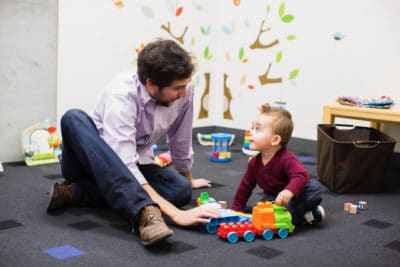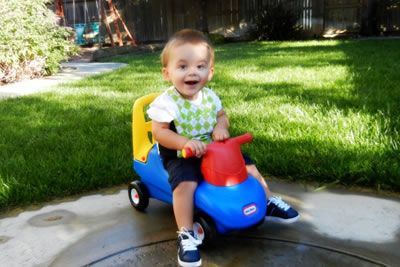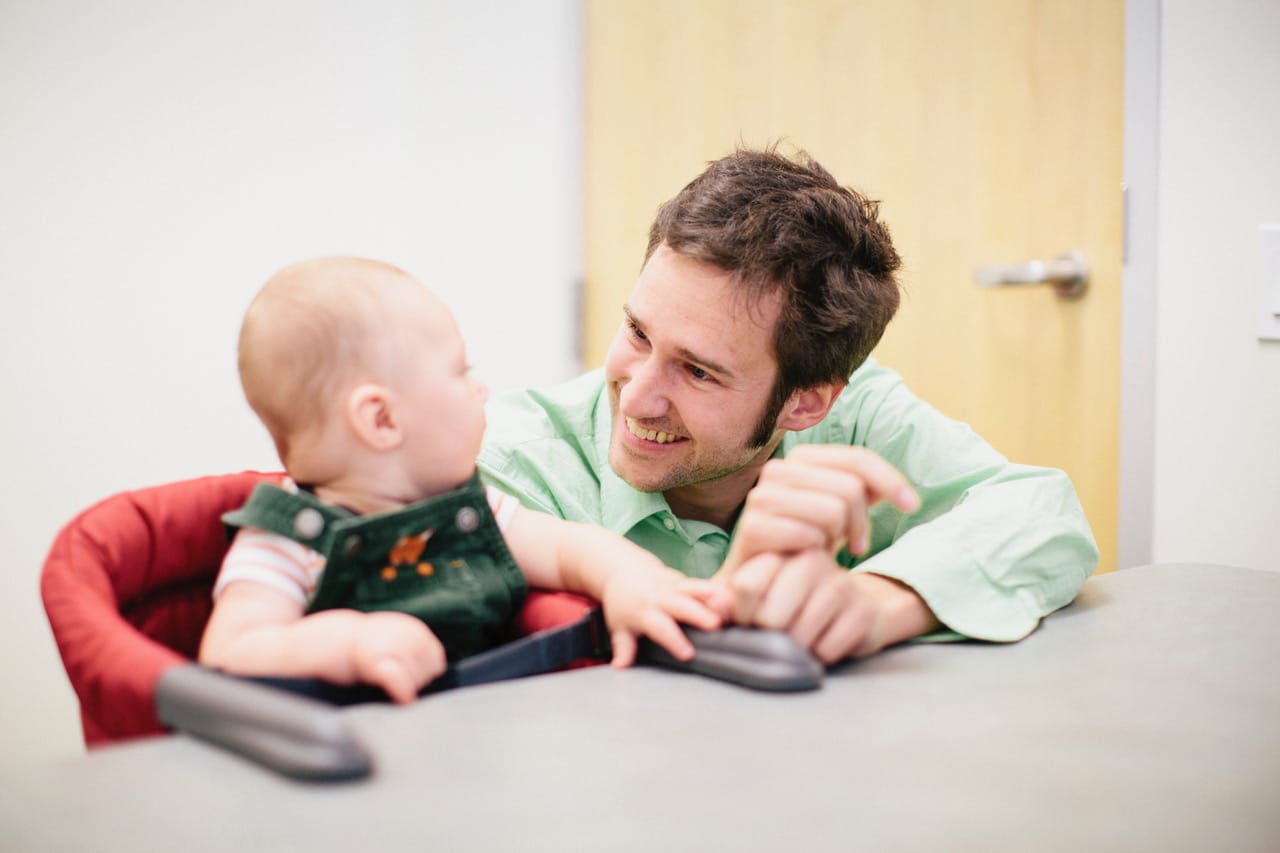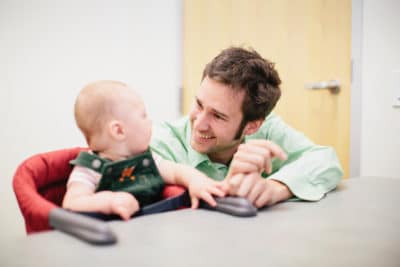 Researchers worldwide use LENA technology to study all sorts of diverse topics, investigating everything from the evolutionary origins of language to how conversation shapes childrens’ brain structure.
Researchers worldwide use LENA technology to study all sorts of diverse topics, investigating everything from the evolutionary origins of language to how conversation shapes childrens’ brain structure.
We’re thrilled to share that the work of Dr. Eric Walle, associate professor in the department of Psychological Sciences at the University of California, Merced, is featured in a recent Netflix documentary series, Babies.
Dr. Walle’s work examines social and emotional development and how developmental transitions, such as walking, impact the infant and family. We caught up with him to learn more about his research and how he uses LENA technology.
Q: Could you share a high-level overview of your research?
Dr. Eric Walle: I first got interested in language research when I stumbled upon a connection between walking and language development. We found that children who were walking had larger parent-reported vocabularies than those of same-aged crawling infants. That finding didn’t exist in the literature previously, so as a scientist, I had to follow up.
We replicated this finding in the United States, and we also found it in China with children who were learning Mandarin. However, we were always left with the question: why? It’s not like walking causes you to learn words, so we thought it was something with walking changing your environment. Children who can walk can interact with more things in the environment, and as a result walking might change how parents talk to their child.
We were studying parent-child interaction in the lab, but the lab is so artificial. We needed a way to get into homes and see what was happening with families. So that’s where LENA came in as a tool. My colleague Dr. Anne Warlaumont, who now works at the University of California, Los Angeles, was really familiar with the LENA system, so the two of us teamed up to look at this in the home.
Q: What did you learn when you analyzed data from the home language environments?
Dr. Eric Walle: The first thing we thought we would find was differences between how many words walking and crawling infants were hearing and how much turn-taking was taking place. The initial paper that Anne and I published on this didn’t show big, mean-level differences between crawlers and walkers, which was surprising. I really thought walkers would get into more things, or they would travel further from the parents, and thus parents would use language to communicate. But it seemed like they were getting pretty similar home language environments, which was similar to what we had found in the lab.
But what Anne and I found was that it’s the quality of interactions, rather than the quantity, that was predicting walkers’ language environments differently than for crawlers. We still don’t know why it matters, but that’s what Anne and I are still working on, is figuring out what’s going on.

Dr. Eric Walle: What we’ve been looking at is using some of the turn-taking analysis that LENA offers, then going in and having human listeners* code manually what is happening in those interactions. So not just if there’s turn-taking, but looking at canonical versus non-canonical vocalizations and how parents might respond differently based on how well-developed that vocalization is by the infant, and then whether those high-quality interactive sequences are what’s important for language learning. Turn-taking is one type of quality, but then within that turn-taking there’s qualitative differences in the quality of the turn-taking. We’re working with our colleagues, Lukas Lopez and Gina Pretzer, to peel that piece back even further.
We used LENA to select regions of the audio that would be more interesting to manually code in detail. We’re looking at five-minute segments with high conversational turns and high child volubility. That’s where the automated analysis is helpful, because otherwise we’d have to have someone listen to all the audio. The system will tell us, “This is where there’s a lot of turn-taking happening; this is a rich five-minute segment,” and then we have the human coders go in and do the more tedious second-by-second coding of the actual interactions.
Q: Do you have theories about why this may be happening?
Dr. Eric Walle: The broadest answer is that I don’t think it’s any one thing. I do think that the social environment is one of the reasons – that the social interactions change on a qualitative level once children start walking. Maybe the significance of the interactions change as the child’s goals change or they become more motorically advanced. That’s one side.
Another thing that Anne and I have talked a lot about is that the change in posture from crawling to walking may change the quality of the vocalizations that the child is able to produce. There could be a more physical explanation on top of a social explanation. It could also be linked more broadly with general motor development. Walking and speech production are both motor acts. We don’t think of speech production as a very coordinated motor act, but it actually is in much the same way as walking is.
But I don’t know what the explanation is, and it’s going to be all these things coalescing that are impacted by the developmental transition of walking.
Q: Anything else you’d like to add?
Dr. Eric Walle: I can anecdotally report that parents seem to be very interested in participating. Especially in a community like Merced, where we’re a new research university, and we’re going into people’s homes from diverse backgrounds — a lot of multilingual families and families from diverse socioeconomic statuses — the families are very interested in taking part. Personally, when I’m trying to do subject research, I’ve found that families tend to be more receptive of me going into than their home than coming all the way to the lab. It’s not just that we’re getting this really rich home data, I think families are really interested in participating so long as we’re willing to meet them halfway by visiting their homes. Overall, families have been very receptive.
Usually at the end of the study, we send families a copy of their LENA report, and they love that. They’ll be like — oh, that’s when we were having dinner and talking a lot! It brings their day to life in a more scientific way.
To learn more about Dr. Walle’s work or sign up to participate in a study, visit his lab’s website.
To see this research in action, tune in to episode six of Babies on Netflix!
*Editor’s Note: In LENA Start, LENA Grow, and LENA Home, audio recordings are automatically deleted immediately after processing into data (number of words and turns, etc.). LENA SP and LENA Pro are the only two versions of LENA that allow the option to retain audio. Each group provides its parents with its own consent form, and parents have the option to participate or not. Learn more about our data privacy here.
See the research:
Walle, E. A. and Campos, J. J. (2014). Infant language development is related to the acquisition of walking. Developmental Psychology, 50, 336-348.
He, M., Walle, E. A., & Campos, J. J. (2015). A cross-national investigation of the relation between infant walking and language development. Infancy, 20, 283-305.
Walle, E. A., & Warlaumont, A. S. (2015). Infant locomotion, the language environment, and language development: A home observation study. Proceedings of the 37th Annual Meeting of the Cognitive Science Society.
Walle, E. A. (2016). Infant social development across the transition from crawling to walking. Frontiers in Psychology, 7:960.




